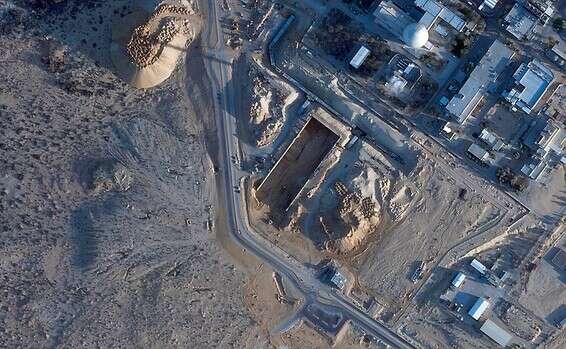
Kochavi: I instructed the IDF to prepare new operational plans for the treatment of Iran // Photo: Institute for National Security Studies
All the peaks also agree that at this stage a close dialogue with the Americans, which is already taking place, should be given a chance. Netanyahu spoke at length with Biden, Ashkenazi spoke with Blinken three times, Ben Shabbat was in contact with his counterpart Jake Sullivan more than once, and Ambassador Arden in front of both the White House and the State Department.

Presenting compelling reasons why a return to the 2015 agreement is bad for the matter itself and also irrelevant to 2021, coupled with Iranian stubbornness that currently abounds, may cause the administration not to return to the nuclear agreement in the end. This is the hope of Israeli officials, and it is also reflected in the crucial discussion that Netanyahu held earlier this week.
In contrast to briefings by unknown sources, according to which there seem to be serious disagreements at the top, the reality is that both in the same discussion and in general, small and natural gaps were discovered between the senior Israeli officials. The same briefings seem more like a continuation of the personal smear campaign against the head of the National Security Council, Ben Shabbat, or like an attempt to frustrate the position of the political echelon again, as the late Meir Dagan admitted in the days of Obama. Unlike then, today everyone agrees that the return to the nuclear agreement is very bad, that we must talk to the Americans and that at this time the military option should be taken out of Naphtali. There may be different opinions as to the chances of persuasion, but there is no dispute.
Netanyahu presents the archive of Iran’s nuclear program // Archive photo: Contact
And since there is such an agreement, Israel is indeed flexing its muscles, once again threatening to “hold me” and preparing in case Iran does break into the bomb and the United States stands aside.
Experience shows that the method of threats achieves results. In his book “A Promised Land,” Barack Obama reveals that the fear of an Israeli attack on Iran was one of the considerations that led him. “Israel has seen a nuclear threat to Iran as an existential threat, and has reportedly prepared plans for a possible pre-emptive strike against Iran’s nuclear facilities. Any action, reaction or irrational move … could have dragged the Middle East – and the US – into further conflict.” This fear has pushed Obama to impose severe global sanctions on Iran.
So in those days, so in that time.